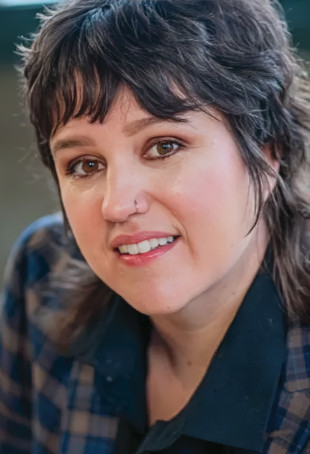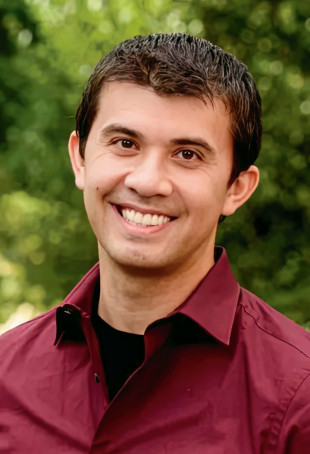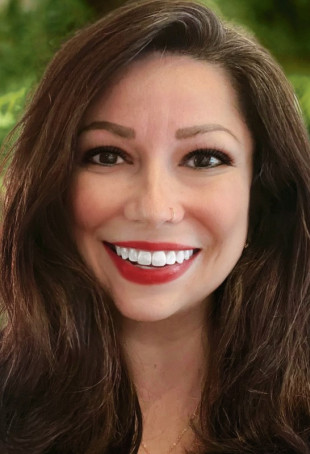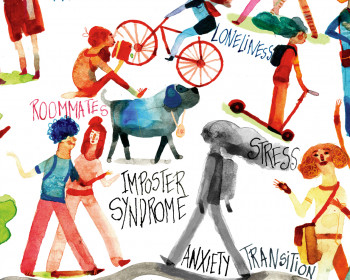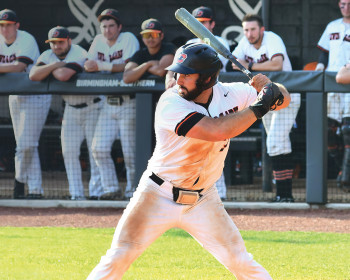Counseling During COVID
The COVID-19 era brings a tremendous need for mental health care, while transforming the way services are delivered.
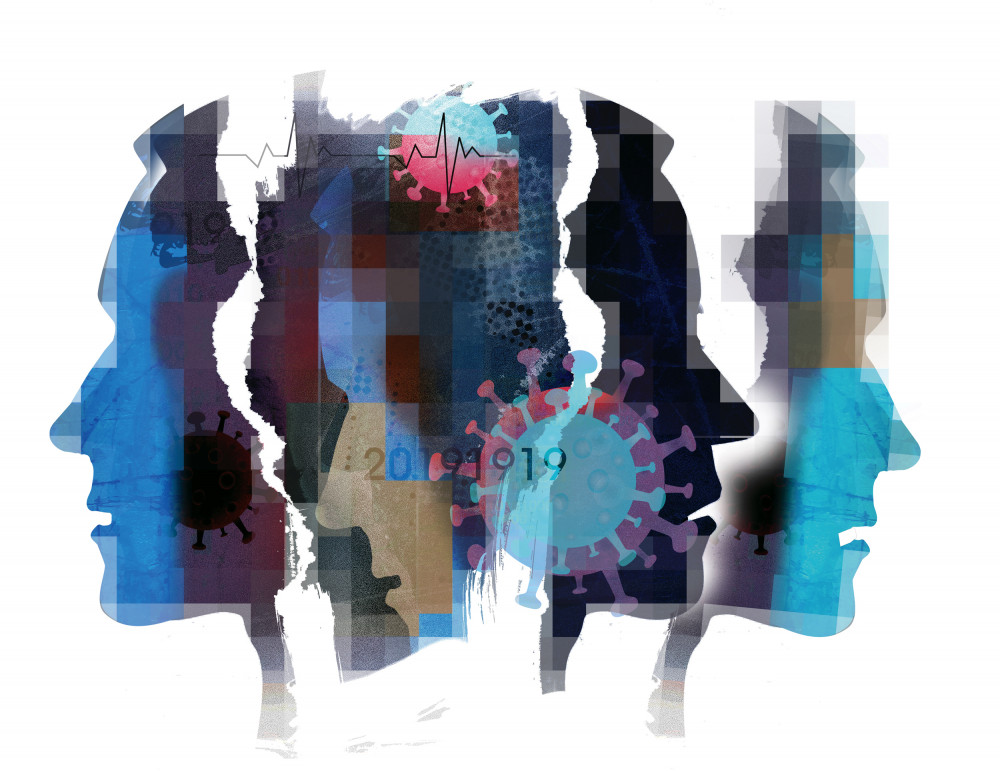
by Jeremy Rosenberg
Jeff Christensen MA ’07 misses the physicality of his private counseling office.
In addition to running his own practice, Christensen is president of the Oregon Counseling Association and an associate professor of counseling in the Lewis & Clark Graduate School of Education and Counseling. When the COVID-19 pandemic hit in early 2020—and lockdowns and isolation took hold—Christensen, like billions of others around the globe, pivoted.
His Lewis & Clark teaching went virtual. He and his grad faculty colleagues adjusted curricula to prepare students to deliver mental health care via telehealth (i.e., remotely). He stopped seeing his private clients in person. In short, Christensen was like the rest of us, adapting on the fly to the deadliest public health crisis in more than a century. As the pandemic has dragged on, he’s been pondering the pros and cons of counseling approaches that were launched or expanded during the emergency. Are these changes going to endure? Should they?
Not a One-Size-Fits-All Approach
“If you were to ask clinicians who had to make the transition to virtual, I think many of them would say that there seems to be something lost without that in-person presence,” Christensen says, calling his practice’s office a “container for safety.” But he hastens to add that not every mental health professional feels the same. “Others would say that there seems to be an added freedom of joining our clients in their virtual space—whether they log on from their living rooms or in their cars. They may be willing to make themselves more vulnerable because it is their space, and they’re able to share more,” he says. Christensen and others in the field aren’t advocating for a one-size-fits-all approach. Different mental health scenarios demand different solutions. For example, victims of domestic violence clearly need a safe space away from their abusers, as do parents and children working out their issues together in group therapy.
Likely better via video: connecting with people in rural areas whose communities don’t have therapists and/or where the culture isn’t pro-therapy; working with clients who are too anxiety-ridden or depressed to leave their homes; or simply meeting with busy clients who prefer the convenience of logging in rather than commuting to an appointment.
L&C’s recent counseling program graduates began their training in person pre-pandemic, but by their final year of study, their academic and community placement experiences were largely online. The graduate school’s most recent cohorts haven’t had the opportunity to train with clients in person, Christensen says, “so we’ve really had to get creative.” For instance, in the first-year Techniques course, instructors needed to figure out how to use Zoom breakout rooms instead of in-person situations to demonstrate active listening and interpreting tone of voice.
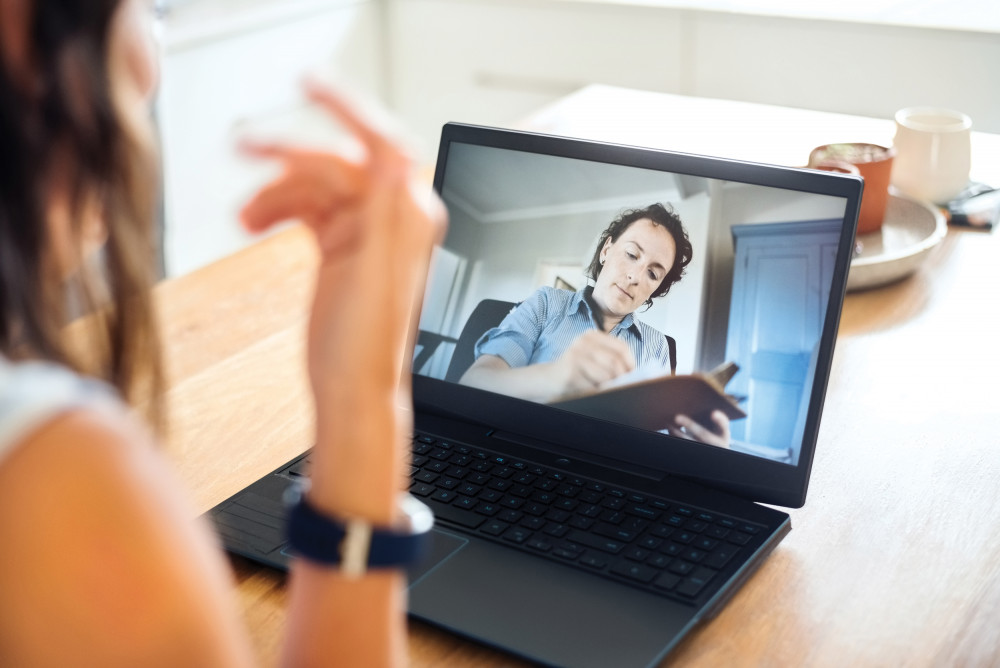
While telehealth has existed for decades, and is part of many employer health plans, its pre-pandemic adoption rate was miniscule—under 1 percent of overall outpatient visits, according to a Kaiser Family Foundation report. By mid-2020, that number had ballooned to 40 percent. An April 2020 McKinsey & Co. study found an increase of 78 times as many telehealth visits as prior to the pandemic throughout the health care sector. McKinsey also found that by February 2021, half of all psychiatry visits were virtual, including 30 percent of visits for substance-use disorders. (By comparison, less than 10 percent of oncology, cardiology, dental, and general medicine visits were conducted remotely.)
In July 2020, the American Psychological Association’s magazine featured a cover story that addressed the efficacy of remote sessions. The conclusion was mostly affirming. “Research to date shows mental health care delivered remotely— also known as telepsychology or teletherapy—is effective,” the APA said.
“Psychologists—along with psychiatrists, social workers, and others—have built a substantial literature base on telehealth interventions that work for a variety of problems and populations. But experts say the COVID-19 crisis has revealed areas where the literature can be strengthened.”
Keely Helmick MA ’07, a licensed professional counselor and a certified sex therapist, owns the Portland-based Connective Therapy Collective. In January 2020, on the eve of the pandemic, Helmick opened their group practice. Just a few months later, Helmick ended up taking their 24-clinician practice virtual, pushing their landlord for upgraded internet, and figuring out telehealth insurance rules.
“I spent the first 14 years of my career mainly doing in-person work,” Helmick says. “When the lockdown happened, we had to shift completely from in-person to fully telehealth. Now, since we transitioned, we’re looking at a whole different way of doing things.”
When the lockdown eased, Helmick initially thought they would be back in the office with clients. But it didn’t turn out that way. “With the availability of telehealth, we’re seeing a lot more people pursue therapy in a way they never had before,” Helmick says. “It’s more accessible, and it’s more needed, at the same time.”
Indeed, that need is massive. The National Institute of Mental Health estimated that in 2020—the most recent year figures are available—52.9 million Americans had a mental illness, and 24.3 million had received mental health care services. (According to the 2020 U.S. Census, there are 258.3 million adults in the country.)
“As humans, we’re meant to have connection,” Helmick says. “When we’re not able to be out with friends, not able to connect, our central nervous system goes into fight, flight, or freeze. We’re just overwhelmed with fear. For many clients during the pandemic, their therapy sessions have become the only times they interact with somebody else throughout the week.”
The issues covered in therapy have also shifted during the pandemic. Beyond the existential survival stresses, the past few years have also deeply affected romantic relationships. “A lot of people who have been together during the pandemic are questioning whether to stay together or divorce, and people that are now single are having a hard time dating again,” Helmick says. “There’s this challenge around how to build sexual and romantic connections.”
- With the availability of telehealth, we’re seeing a lot more people pursue therapy in a way they never had before. It’s more accessible, and it’s more needed, at the same time.”Keely Helmick MA ’07
- ...whether they log on from their living rooms or in their cars. They may be willing to make themselves more vulnerable becauseit is their space, and they’re able to share more.”Jeff Christensen MA ’07, Associate Professor of Counseling and President of the Oregon Counseling Association
- We’re all just trying to figure out a new normal. COVID is here to stay, and hopefully it’s moving into endemicity.”Noreen “Nori” Valdez Gruber MA ’11, Clinic Director, Lewis & Clark Community Counseling Center
Training Counseling Students
Noreen “Nori” Valdez Gruber MA ’11 is a licensed professional counselor and the clinic director of the Lewis & Clark Community Counseling Center. The center is a mental health teaching clinic that serves the Portland area through general counseling; addiction counseling; and marriage, couple, and family therapy. (This clinic is distinct from the Lewis & Clark Counseling Service, which provides on-campus help to students.)
“The pandemic has been hugely impactful for everyone—for clients, for clinicians, and for health care professionals in general,” Gruber says. “We’re continuing to deal with the mass of illness and death that has happened and is still happening.”
Long term, Gruber says she thinks we’re heading toward an equilibrium. “We’re all just trying to figure out a new normal. COVID is here to stay, and hopefully it’s moving into endemicity,” she says. “I think we’re just trying to learn how to move around in the world again and attempting to do so in a way that feels safe to each of us.”
At the Community Counseling Center, L&C students work as therapist trainees under the direct supervision of faculty and licensed supervisors. The students have already completed the bulk of their coursework by the time they are ready for their two-semester practica, which take place either in the clinic or with community partners. Last year, the center celebrated its 10th anniversary, having served almost 4,000 people. Gruber says it currently serves approximately 240 people per week.
At the time of this writing, the clinic is operating exclusively virtually, but the students have been gauging clients’ interest in coming back in. “Clients are thinking about it,” Gruber says. “There’s a small handful of folks who are very, very eager to return … for example, there’s one client who doesn’t have access to highspeed broadband, making Zoom meetings really hard.” When the center does reopen in real life, people will be expected to selfmonitor for symptoms of COVID, and the clinic will operate within current Oregon Health Authority guidelines.
“No matter what happens, we are equipped to do hybrid services from here on out,” Gruber says. “So the decision for returning to in-person services will be up to the client. If they want to do it, then great, we will welcome them with open arms. But if they still prefer to do telehealth because of the convenience or because it feels safer for them, we will absolutely honor that as well.”
As Associate Professor Christensen says: “Telehealth isn’t going anywhere. There will always be some telehealth component for our students to work within the community because of the accessibility.”
Lasting Career Impacts
For L&C students on the cusp of graduation, a combination of factors related to the pandemic point to the likelihood of a jump-started career. “Our students who graduate and want a job can easily get one,” Christensen says. “COVID has heightened the need for folks to have mental health support.”
Christensen also has observed a cultural shift, especially among youth, to embrace therapy. “We’re seeing a destigmatization of mental health,” he says. “At least in the Portland area, teenagers think it’s cool to have a therapist. Up until now, that’s never been my experience.”
While the demand for treatment is up, the supply of practitioners may be trending down in the face of burnout across the board for health care professionals. “At the beginning of all of this, everything was just completely turned upside down for everyone—no one was immune, including clinicians,” Gruber says. “There was this immediate need. It was like this tsunami of requests for services that really inundated the networks of clinicians.”
Helmick says that, even in good years, therapy can be an isolating profession. “Even though you’re always talking to people, there’s a lot of emotions involved, there’s a lot going on. When you’re talking about people’s problems six to eight hours a day in extreme isolation via a screen, it’s really, really challenging. It’s been especially tough for those of us who have been used to practicing in person for so many years.”
Or, as Gruber puts it: “Clinicians are not superhumans, immune to the daily anxiety that we’ve all been dealing with, so imagine working with clients and holding space for them, working out all of this anxiety, depression, and isolation. Your clinician has probably been dealing with all of that, too—you know, just two fellow humans convening in the middle of this disaster.”
Meanwhile, the anecdotal evidence suggests that people throughout the country are having difficulty locating therapists who will accept new clients. Helmick says their group practice has wait-lists and that there just aren’t enough therapists to go around.
But one bright spot is that clients are not missing appointments. “Never in my pre-pandemic career have I seen so many clients showing up for their appointments, week after week, no matter what,” she says. “We’re experiencing such a high demand because of the desire to have some connection to humanity. But it’s always sad when we’re busy, because that means there’s so much need.”
More L&C Magazine Stories
Lewis & Clark Magazine is located in McAfee on the Undergraduate Campus.
MSC: 19
email magazine@lclark.edu
voice 503-768-7970
fax 503-768-7969
The L&C Magazine staff welcomes letters and emails from readers about topics covered in the magazine. Correspondence must include your name and location and may be edited.
Lewis & Clark Magazine
Lewis & Clark
615 S. Palatine Hill Road MSC 19
Portland OR 97219
